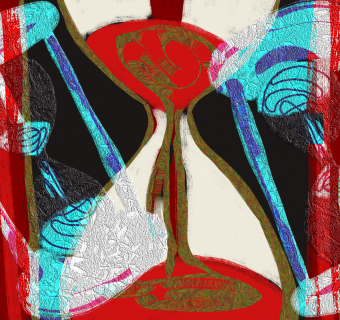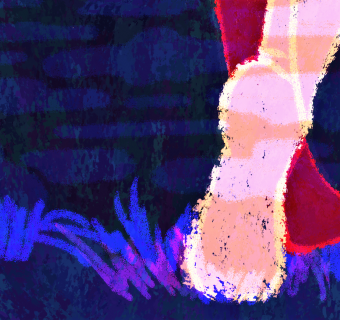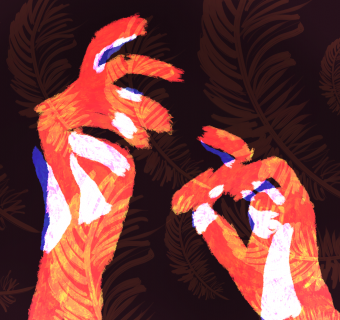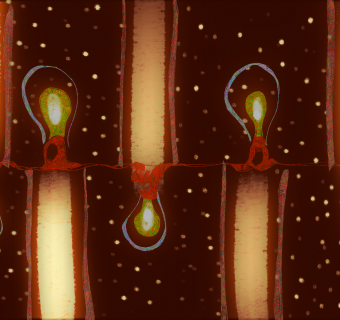Magazines have a habit of piling up at my house. I suppose I could cancel the subscriptions, but I'm a child of the 80s and, while I value finding articles on my phone and laptop, I’m not ready to give up print magazines. My budding feminist sensibilities were formed by reading my mother's magazines. I just may have had a bad habit of stealing her Good Housekeeping or Ladies Home Journal when I brought the mail in…
So, magazines pile up, and I binge read every couple of months.
A couple of weekends ago, my daughter helped me turn the corner of my bedroom into my new office. (Welcome to working from home in the age of coronavirus. I do offer as a side note one tiny victory in this weird time turned inside out: the internet's newfound respect for us Gen Xers). In the process, I gathered up the magazines that had come since mid-December, apparently none read but all scattered around the room, stacking them in a neat pile on the table under the window.
A few nights ago, in between books and restless from watching the news too late, I grabbed the stack of Real Simples. (Self-care tip: do not watch the news any later than you're drinking coffee at night. If you wait until the morning, you won't miss anything important, but you will stand a chance of falling asleep.) I opened it seeking a soothing diversion; I found myself falling back through time.
The quote on the spine of January’s issue was properly comforting: Eleanor Roosevelt’s encouragement that “With the new day comes new strength and new thoughts.” February offered the inspiration “How decluttering keeps the peace at home.” Exploring four different “clutter conflicts,” “Clutter Therapy” shares insights from experts—professionals and real couples—with the promise that “clashing styles can happily coexist.” Well, this was probably pitched as a post-New Year’s resolution story to help people remain firm in their resolve that 2020 would be the year that they finally organized their homes. But staring ahead at three more months of a stay-at-home order, I could see how it was even more timely than any editor could have dared to hope back in the fall of 2019 when the issue was laid out.
Then I moved onto the March issue… and tumbled into what felt like a tesseract through time and space. Among other temptations, the cover teased me, “Throw a Party for a Good Cause.” In the “Your Words” feature, readers answered, “What’s a little thing you do to show your loved ones you care?” and someone very sweetly—and so pre-COVID-19!—said, “I show up. Whenever. Wherever. You can count on me to show up.” Um, actually, no. We need to count on you to stay home and #flattenthecurve, thank you very much.
I'm sure you won’t be surprised to hear it only got more surreal from there. The party article? It told me how to host a wine tasting, an all-ages pizza party, or a sweet smorgasbord—and all for a cause, throwing these gatherings to “put the ‘fun’ in ‘charity fundraiser’.” A laudable cause—but the photos illustrating the story most definitely did not feature appropriate social distancing. Though now that I think about it, I do appreciate the overlap between the story’s aims and the Charlottesville efforts to feed our frontline health care workers and support our local restaurant scene.
I mentioned in one of my columns for the Women’s Center’s blog that the Women's Center staff has experienced the move to remote work asynchronously. Now, I'm reading asynchronously. The experience reached peak absurdity for me when I got to the articles on “16 Easy Hacks to Make Life at Work More Comfortable” (Any chance that #1-16 are all: go back in time and stop the spread of coronavirus before it became a global health pandemic???), a rival to February’s “One & Done,” which unironically promised, “these instant-outfit ideas eliminate the stress of deciding what to wear—and streamline your get-out-the-door routine” (and no, it doesn’t feature pajama sets!).
I sunk into the pile of magazines because I couldn't concentrate on a novel. Something about the trauma of adjusting to shelter in place for a global pandemic threw off my reading rhythm. To be honest, for a few days, the thought of picking up a book, opening it, and losing myself in its world made me think of all those books I’d read that you really shouldn't read in this moment: Laura Ingalls Wilder’s The Long Winter, Mary Shelley’s The Last Man, Andy Weir’s The Martian. I have a vivid imagination and a mind that races down seventeen train tracks at once.
It didn’t surprise me that as I tried to focus on the magazine in my hands, my mind was insistently asking, What does this experience tell us? What is it like to read this way? I am somewhat reminded of what it was like to spend the fall of 2012 caring for my husband as he rehabbed from a crippling swimming accident, while all around me, everyone else went on with their fall semester as if my world hadn’t stopped turning. But this is different: we’re all in this together, even if our individual experiences of these quarantimes (thanks, Katie, for this fabulous word!) are uniquely our own.
And then I come to a personal essay, appropriately titled, “All Together Now!” I realize as I flip the pages, settle into her story, that for a moment, I'm living in some alternate March 2020. Coronavirus isn't a word my autocorrect recognizes before I finish swiping it. For a moment, I don't feel like I'm living in some sci-fi dystopian novel. I know this feeling. I remember the nap I took on August 2, 2012. I was at my sister's shore house, John was in ICU, and I slept for 45 minutes. And when I woke up, for 45 seconds, I did not remember what had happened. And then I did. Nearly 8 years later, I still don't have words for that shock.
But I do have the bodily knowledge of how to get through trauma and how to heal from it. I have the emotional knowledge of the joy that comes from building something stronger for its fragility out of the wreckage of your former life.
“All Together Now!,” the article that prompts this insight, is about multi-generational family travel. As the author describes ways that traveling with her parents deepens her daughter’s bonds with them, I wistfully smile in remembrance of my mother’s pilgrimage back to Buffalo last fall. John, Nora, and I drove up to join her and my father, and I had the adult privilege to witness her in her childhood home. That homecoming is my mother's story to tell, not mine. But I can say: through the years, I’ve come to understand that you can have both roots and wings. We don't often have the privilege of knowing we're going through a transformation as we go through it. This great pause we’re in is offering us choices, if we’re courageous enough to claim them: which page will be on when we synchronize our private and public lives post-coronavirus? This is the small consolation I cling to in these quarantimes.







